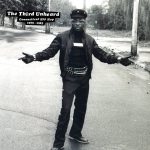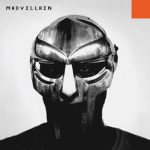Written by Jeff Chang and published in Village Voice, June 1, 2004
The first reported death of hip-hop—and they've all been premature—came in the summer of 1979, months before "Rapper's Delight." Uptown, the kids had grown up and out of the old Bronx style. No one break-danced anymore, they roller-skated. Top guns like Flash and Jazzy Jay saw their Bronx crowds fleeing to DJ Hollywood and Eddie
Cheeba parties in Harlem, where they could dress fly and be sophisticated. But everyone everywhere else was just getting started. At the furthest reaches of the hip-hop universe, in the Black Belt of Long Island, an 18-year-old Chuck D was learning his way around the mic with Hank Shocklee, "the Bambaataa of Roosevelt," and his Spectrum City crew. Across the Hudson in Jersey, a new label called Sugarhill was about to change the game with a group of unknowns from nowhere. And in a sleepy valley town called Ansonia, halfway between New Haven and Bridgeport, record-store owner Tony "Mr. Magic" Pearson caught the fever and decided to put Connecticut on the map.
Such are the simple pleasures of hip-hop history, still being excavated by gold-dust diggers like Eothen "Egon" Alapatt, who runs West Coast producer-DJ Peanut Butter Wolf's Stones Throw label. Implicit in Alapatt's The Third Unheard: Connecticut Hip Hop, 1979–1983 are a historical correction, a demand for real rap scholarship, and most of all, a loving tribute to lost records. Mr. Magic's "2001 Kazoos" nods to the Furious Five's "Freedom" and brags about a rowdy party with Sister Sledge. They never worry that they're biting Bronx style—they're having such a great time, it's stupid to ask. Here's Magic: "If your name is Ted or your name is Fred, everybody in the house say, 'Go 'head!'"
Magic's star was a 12-year-old he named Pookie Blow and induced to cut "Get Up (and Go to School)" before the kid's voice changed. Magic's canvassing of southern Connecticut resulted in relentlessly exuberant records like Rappermatical 5's "Party People" and the Outlaw Four's "Million Dollar Legs," driven by Pumpkin, the Pretty Purdie of rap breaks. Magic peaked with the diggers' holy grail, The Be-Bop Convention, an LP that sold 1,000 copies and encapsulates the True School aesthetic—music whose sheer joy justifies its existence against all the market-proven, VH1-feted hits and whose very ephemerality makes it a fragile thing that demands preservation.
More problematic for True Schoolers is African rap. It's a no-brainer on paper. Who can't find love for Mama Africa's funky children? And isn't hip-hop culture supposed to be purer overseas, especially in languages that have no synonym for "bling"? When Kenya's Kalamashaka open their Swahili-and-English "Ni Wakati" with a clip of Malcolm X shouting back to the Mau Mau, and rap about "white man's society," the argument seems apt. But it also feels like nostalgia for a back-in-the-day that never was.
In fact, there's a light-year effect to overseas hip-hop—some of the music on The Rough Guide to African Rap sounds as if Das EFX must really be big in the motherland. The truth is, in an era when only superproducers can afford to sample the breakbeat canon, monopoly dollars drive the style cycle, and even the price of entry into the underground is hitting inflationary levels. African rap isn't likely to shock the ciphers, let alone challenge Timbatunes' supremacy.
Which says a lot more about the confusion created by North American hip-hop hegemony than about global hip-hop's vitality. Although the pan-African Rough Guide is nowhere near as cohesive or compelling as 2001's Senegal-based Africa Raps, it tantalizes the listener with the sheer breadth of the continent's output and provides the vague outline of a historical narrative.
In 1992, Dakar crew Positive Black Soul broke through in Europe, becoming the African Public Enemy, and soon elders like Tony Allen and Manu Dibango were updating their sound with rappers. But where those collabos sound forced, the young lions brim with a sense of discovery. On The Rough Guide, there's Tanzania's X Plastaz, rapping trilingually over a classic breakbeat tinged in Masai hues. Brit-born, Ghana-raised Reggie Rockstone offers the "hip-life" "Eye Mo De Ana," a mix of hip-hop and highlife, in a strangely engaging cross between Lou Bega's "Mambo No. 5" and Brand Nubian's "Concerto in X Minor."
The most compelling stuff doesn't sound anything like what True Schoolers would recognize as hip-hop. Intergenerational Mozambique collective Mabulu add raps to a gently circling guitar-based sound called marrabenta. And Malian crew Tata Pound's "Badala" rocks along at merengue-ish tempos, an infectious sound that would feel as comfortable at a Washington Heights block party as at one in Bamako, the same universality hip-hop has offered since "Rapper's Delight." Who knows? Maybe in 25 years we'll be looking back like we should have known.

